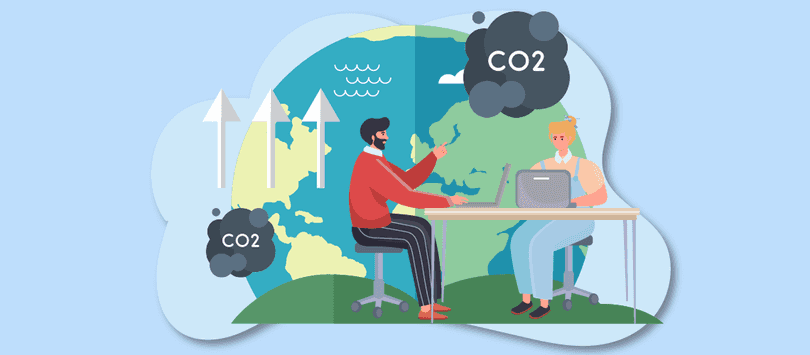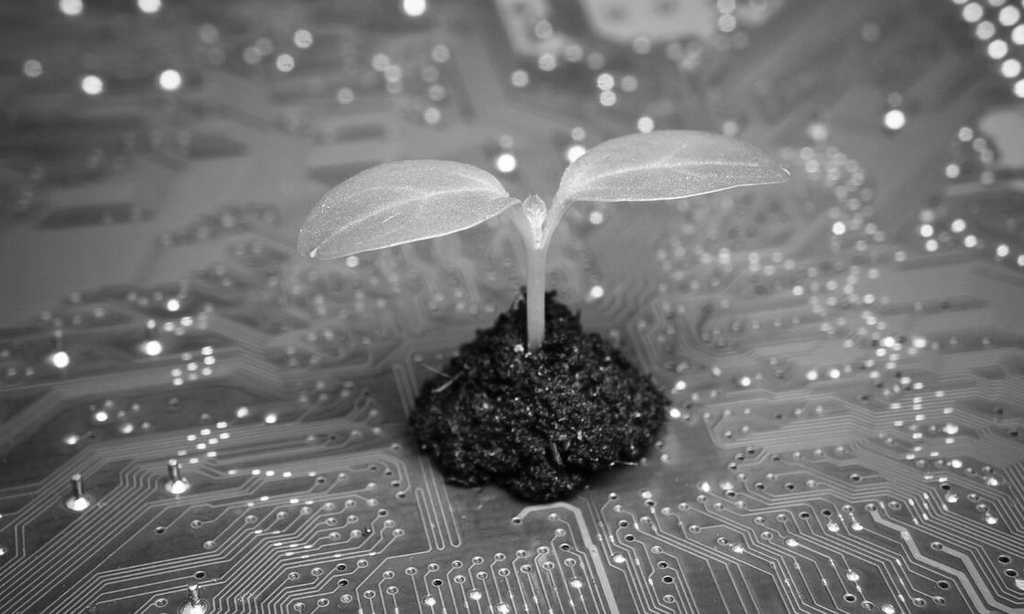Study on the ecological impact of digital technology: another future is possible
In early March of 2023, ADEME and Arcep published the third part of their government-commissioned report on the impact of digital technology on the environment. By setting out a number of hypothetical scenarios, this study takes a lucid look at the future and calls into question the way we use digital technologies.
The worrying figures for 2030 and 2050, when digital pollution will have only increased, are fortunately put into perspective by the prospect of another future: one in which we choose sobriety. Here's a look back at a study that is as enlightening as it is instructive.
An alarming fact: +45% greenhouse gas emissions by 2030 if nothing changes
The analysis carried out by ADEME and Arcep distinguishes scenarios on several time scales, both 10 and 25 years. It shows that if nothing is done to reduce the environmental impact of digital technology by 2030, the increases in terms of consumption and resources mobilized will be insane:
- The number of devices: 65% higher than in 2020 (due in particular to the boom in connected objects).
- Data traffic: 6-fold increase
- Consumption of abiotic resources (metals and minerals): +14%.
- Electricity consumption (during use): + 5%.
If we apply this trend scenario to 2050, the production of greenhouse gas emissions from the digital sector could triple, while energy consumption could double.
Analysis of the data in this worrying scenario shows us how important it is to question not only our production methods, but also our use of digital goods and services.

Horizon 2030: 3 alternative scenarios and a focus on terminals
However, the trend can be reversed, as shown by three alternative scenarios.
These are based on the potential evolution of 4 variables:
- volume of data consumed (video, cloud, AI, IoT, metavers, blockchain)
- power consumption in the digital sector.
- number of devices and terminals (TV sets, computers, Internet boxes, smartphones and connected objects)
- their lifespan
One constant is the need to limit the carbon footprint of terminals, the main cause of consumption of abiotic resources (metals and minerals). Beyond the CO2 emissions of these everyday objects (scope 2 and 3), they must also meet social responsibility standards such as ISO 26000 during their manufacturing phase.
Here are the three hypotheses highlighted for 2030:
Moderate eco-design 🌱
This scenario partially adopts the principles of ecodesign without modifying the forecasts concerning the anticipated evolution in the number of equipment and terminals. It does, however, involve the extension of equipment lifetimes thanks to ecodesign. Even a "moderate" implementation would reduce digital power consumption by a quarter.Widespread eco-design🌿
The hypothesis of widespread eco-design would go further than the previous scenario. The digital industry would move towards goods and services with minimal impact, or complying with the strictest environmental impact measurement standards. This would reduce resource consumption by 15% and stabilize the **digital industry's growing carbon footprint** (+5%).Digital sobriety 🌳
Finally, in the case of a digital sobriety strategy, equipment manufacturing methods would be modified to minimize their number on the market. With a more sober use of digital, equipment would be limited and reconditioned products favored. In short, this scenario would see the implementation of principles to reduce digital pollution by all players in the value chain (from users to the supply of goods and services) and the advent of low-tech.Digital sobriety also requires training and awareness-raising initiatives aimed at developing a methodological framework for measuring digital sobriety. digital4better, creator of the solution fruggr, is already actively contributing to this effort!

Horizon 2050: 4 possible society models
As part of the "Transition(s) 2050" exercise, ADEME has created four societal models that can guide us in the challenges we face to achieve a carbon-neutral goal by 2050.
The Repair "bet" 🏗️
Following on from the trend scenario for 2030, the "Pari réparateur" model imagines a world where we have taken the gamble of being able to manage or repair social and ecological systems with the help of technology. These technologies are used, for example, to extract energy from biomass and promote decarbonization. Thanks to this, our current lifestyles are preserved, but at a high price: the impact on the environment is substantial, with the carbon footprint of the digital age multiplied by 5 compared to 2020.
Green technologies 🏡
This model of society imagined by ADEME is that of tech4good implemented throughout society by 2050. This would be a world in which technological development and innovation are harnessed to meet environmental challenges, without radically changing our everyday behavior and use of digital technology.
Territorial cooperation 👨🌾
Through territorial cooperation and shared governance, society is slowly but surely moving towards a more virtuous and environmentally-friendly system. To maintain social cohesion and achieve **carbon neutrality**, non-governmental organizations, public institutions, the business sector and civil society are working hand in hand.Frugal generation 🚲
Finally, the "Frugal Generation" scenario implies a profound and **lasting change in our lifestyles**: means of locomotion, food, heating, purchasing and digital uses...The preferred model for halving our carbon footprint, it is also the most ambitious. It would require a halt to resource depletion and environmental degradation, thanks to behavioral, organizational and technological innovations. From a digital point of view, this model would imply a massive reduction in equipment production and the use of more energy-efficient terminals.

Digital sobriety: the only way to reverse the curve
If the Paris Agreement target of 2050 is to be met, digital technology must play a key role. Users, terminal and equipment manufacturers, network and data center operators and content and application providers will have to make a joint effort to meet the environmental challenges. Beyond the carbon footprint, it's also a question of the availability of metals and resources used to manufacture terminals.
Thanks to this study by ADEME and Arcep, we are already in a position to identify levers for action to implement a policy of digital sobriety:
- Reducing and stabilizing the number of devices and extending terminal lifetimes
- Widespread reconditioning and repair of equipment
- Raising consumer awareness of the challenges of digital sobriety
- Systematize eco-design not only for terminals, but also for all equipment, including network infrastructures and data centers.
By activating all these levers, we could reduce the environmental impact of digital technology by up to 16% by 2030, compared with 2020. By applying Digital Sustainability best practices, we can all contribute to digital sobriety.
Companies are the first players capable of playing a role in the collective effort to preserve the future of our planet by adopting a sober digital approach. The first step is to assess your footprint. More than just a tool for measuring carbon footprints, fruggr software offers a global solution for measuring the environmental and social footprints of companies.
By focusing on ISO certifications, CSR strategy, eco-design, training and awareness-raising initiatives, and ESG performance, fruggr proposes concrete measures to reduce the environmental footprint over the long term. Thanks to a precise analysis of the data collected, this innovative solution provides clear indicators and personalized recommendations to support companies in their transition to a more responsible, high-performance digital environment.
